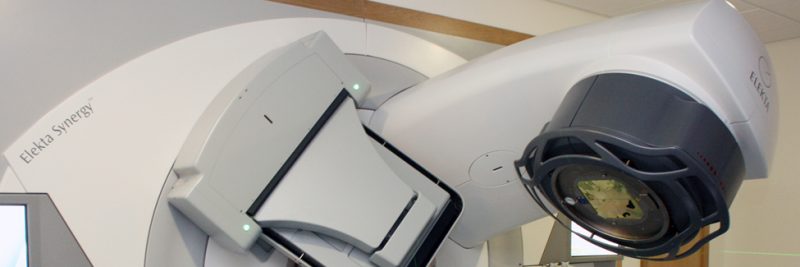
We operate a quality management system which is certified to ISO 9001 by BSI under certificate number FS 38239.
What do we do?
The radiotherapy physics group at The James Cook University Hospital provides high quality scientific, computing and technical support to the clinical radiotherapy service.
Alongside HCPC registered clinical scientists, the group comprises mould room staff who work with individual patients to create immobilisation tools, ensuring that patients can be positioned accurately for treatment on a daily basis, and technologists who diagnose and repair faults with the treatment units as well as performing proactive maintenance tasks and quality assurance to reduce the risk of machine breakdown.
We have technologists who maintain the complex clinical systems and IT infrastructure which are critical to the delivery of radiotherapy.
Physicists take part in all aspects of radiotherapy treatment including the creation of patient-specific treatment plans, dose and radio-biological calculations, clinical audit and the calibration and quality assurance of treatment machines, to ensure that plans can be delivered accurately.
Radiotherapy physicists provide the means to commission new technology and services within the requirements of the department and provide scientific and risk-management advice about the running of those services.
Innovation in radiotherapy treatment is driven through partnerships developed between staff groups and the physics group plays a significant role in developing and implementing new treatment techniques.
In recent years the development of the service at the James Cook University Hospital has evolved from a largely ‘conventional’ approach using static radiation beams to a dynamic delivery platform referred to as VMAT (volumetric modulated arc therapy).
In VMAT treatments, different machine components are synchronised as the unit circles around the patient to deliver state-of-the-art radiotherapy, ensuring maximum radiation doses are delivered to the cancer while reducing the unwanted side effects of treatment.
The physics team have invested significant resources in this, and other projects, including the commissioning of new treatment machines and planning system software used to design these treatments, as well as supporting other staff groups in becoming familiar with the technology and promoting the use of these new techniques.
Physicists at The James Cook University Hospital engage in research across interests including brachytherapy, rotational radiotherapy delivery techniques, planning methods, in-vivo dosimetry, automatic contouring and imaging as well as providing support to radiotherapy clinical trials.
What are the different types of radiotherapy?
Every one of our patients will require a personalised plan for their treatment – each type of tumour responds differently to different types of treatment, and the choice as to which form is the most appropriate differs very much from patient to patient.
Developments in radiotherapy technology have meant that we can target cancerous tumours with increasing accuracy. This means that fewer healthy cells are damaged and hence we are able to give stronger doses that are more effective and shorter in duration.
The types of radiotherapy we offer
Image guided radiotherapy (IGRT)
Intensity modulated radiotherapy (IMRT)
Volumetric modulated arc therapy (VMAT)
Stereotactic ablative radiotherapy (SABR)
Brachytherapy
Superficial radiotherapy
Electron beam therapy